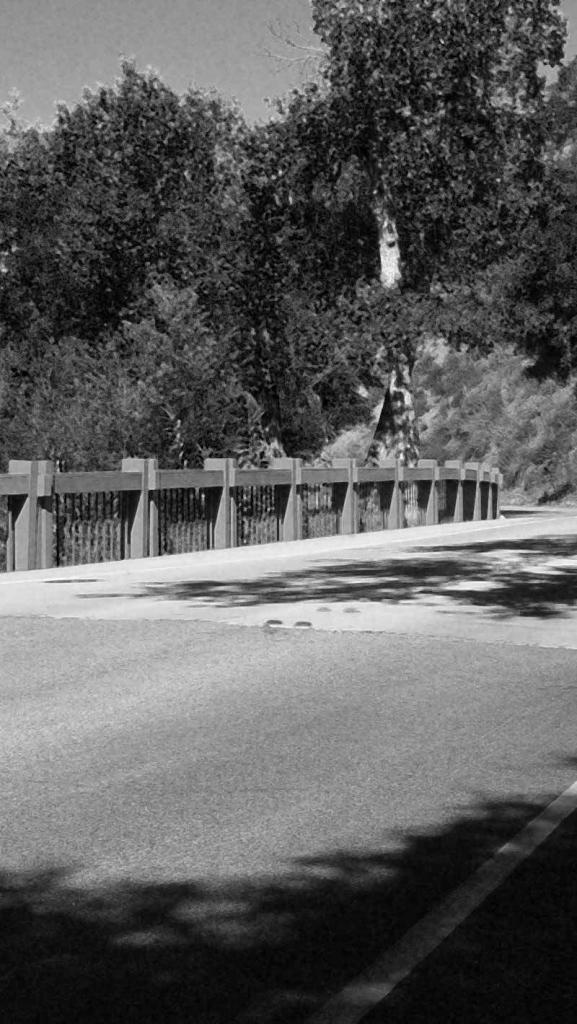Camp Comfort County Park can be found along the scenic Creek Road in Ventura County, California, not far south of Ojai. The park has been a resting spot for weary travelers for centuries, with its picturesque, oak-sheltered location and abundance of clear running water. It was commonly referred to by travelers as a “comfort spot”, which was where it got its name. Of course, even the greatest of comfort can never ensure true safety, just as the most peaceful of locations can house the darkest of secrets. The darkest perhaps being the legend of Char Man.

Ojai
Ojai has a plethora of grim and unsettling urban legends under its belt, including the Ojai vampire which was said to have travelled there from either Italy or Spain in 1890. Another more common, and far more grisly, tale is that of the infamous Char Man. One particular bridge in Camp Comfort has been dubbed “Char Man Bridge”, legends telling that any motorist who dares get out and shout for the hideously burned spirit shall meet an agonizing death at his disfigured hand.
Char Man Legends
This particular legend is subject to far more speculation than most. Seemingly everyone has a different version of how the Char Man came to be. A few of these stories begin in a huge fire in 1948. Some surmise that a firefighter was tragically caught in that particular blaze, burning alive in his suit. Others say that a father and son were badly burned in the fire, the father being killed in the blaze while his son went mad from the pain and torment, peeling his fathers burned skin and hanging the corpse in a tree before retreating into the woods.
A third tale revolving around the same 1948 inferno was that a woman was trapped indoors while her husband, badly burned but still breathing, listened to her cries from outside as the fire slowly consumed her. Dark tales from the people of Ojai, to say the least.
That particular fire was reported to have no casualties, so unfortunately these theories into the dreaded Char Man’s origins don’t hold much weight.

One common story told by locals is of a brutal automobile fire near Char Man Bridge, wherein a motorist escaped his car and fled into the woods, still enwreathed in flames. The unknown driver was said to survive the severe burns he endured and still stalks the roadside to this day.
Wherever the Char Man came from, his appearance is unmistakable: covered in horrific burns from head to toe, his skin blackened and peeling, clad only in a few charred bandages. Before unwary motorists see the spirit they shall smell his ghastly aroma of burned flesh, if they’re lucky. If not, the Char Man may just have another skin to replace his own.
Though for some, luck has nothing to do with it. Many locals have taken to the adrenalin-sport of stopping their cars on the bridge, getting out and calling “Help me!” to coax the flaming horror from the treeline. One thing is for sure, if an orange glow appears anywhere in the woodland by Creek Road, it would be best to keep right on driving.
References
Char Man | Creepy Urban Legends (quotev.com)
Creepy urban legends from around the USA (thevintagenews.com)
Joe first knew he wanted to write in year six after plaguing his teacher’s dreams with a harrowing story of World War prisoners and an insidious ‘book of the dead’. Clearly infatuated with horror, and wearing his influences on his sleeve, he dabbled in some smaller pieces before starting work on his condensed sci-fi epic, System Reset in 2013.Once this was published he began work on many smaller horror stories and poems in bid to harness and connect with his own fears and passions and build on his craft.
Joe is obsessed with atmosphere and aesthetic, big concepts and even bigger senses of scale, feeding on cosmic horror of the deep sea and vastness of space and the emotions these can invoke. His main fixes within the dark arts include horror films, extreme metal music and the bleakest of poetry and science fiction literature.
He holds a deep respect for plot, creative flow and the context of art, and hopes to forge deeper connections between them around filmmakers dabbling in the dark and macabre.

